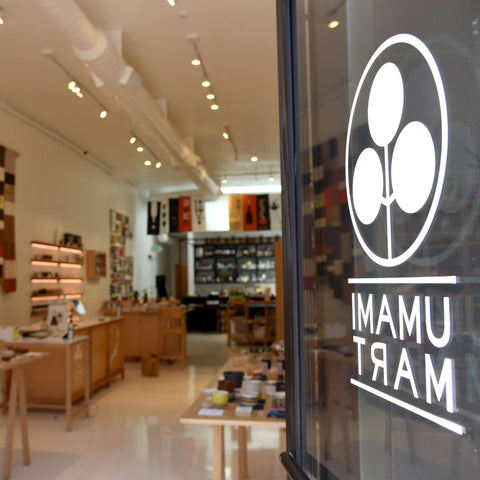
L-R: Me, Miho Imada and Kayoko at the shop in summer of 2024
Miho Imada has been brewing sake at Imada Shuzo since 1994 after taking a crash course in sake brewing at the National Research Institute of Brewing of Japan. In the three decades since, she has revived a forgotten rice strain called Hattanso, been selected as one of the 100 “inspiring and influential women” around the world by the BBC in 2020, and is currently making sake with flat-polished rice.
Through all of these changes and accolades, I wondered about her latest obsession in the brewing process. To that she said that she was most interested in how to get it right during the steaming of the rice. “I think steaming is the most difficult part of the sake brewing process,” Imada says, “You may ask why, but I think the simple things are the most difficult. Steaming is done by changing the temperature and amount of steam depending on the variety of rice and the polishing ratio, but it is difficult to get the rice just right. The atmospheric pressure changes depending on the weather, so the rice is affected by so many variables. When the rice is steamed just right, it becomes good koji.” And good koji is the basis of good sake.
I want to celebrate Miho Imada this month by featuring her Biho Junmai Ginjo (Biho can also be read as Miho). I love this sake because it captures her energy and consistency. Every time I see her, I end up engaging in a passionate conversation about sake (or honey!) and it’s always inspiring. I can’t wait to visit her brewery some day in Hiroshima.
Kanpai.
Yoko (Co-Founder, Umami Mart)

Fukucho Biho Junmai Ginjo
Imada Shuzo (Hiroshima, Japan)
Seimaibuai: Yamada Nishiki 60%, SMV: +3, Acidity: 1.5, Yeast: Hiroshima Prefecture
This bottle-pasteurized sake is good enough to have the same moniker as its brewer, and has been made for 30 years (about as long as she’s been brewing). It is an excellent example of Hiroshima ginjo sake, with aroma of green grape skins and Granny Smith apples. It is creamy upon entry and ends with a long, complex finish and a hint of ginger ale. This semi-dry, fruity, fragrant brew is best chilled with shellfish like squid, oysters, or mussels with a squeeze of lemon and handful of parsley. Miho loves honey and recommends this sake with melted Camembert cheese, topped with a crack of pepper and drizzle of honey!

Chitose Tsuru “Suisei” Junmai Daiginjo
Nippon Seishu (Hokkaido, Japan)
Seimaibuai: Hokkaido grown Suisei 45%, SMV: -2, Acidity: 1.3, Yeast: 601 and 1801
I plan the Gumi calendar about six months out and as of last year, Chitose Tsuru’s toji was a woman. Tomoko Ichizawa was interested in creating a line of sakes that were made with local Hokkaido rice. As the new year rolled around, I was informed that Ichizawa had left and Takehana Toshitaka assumed her role. He carries the torch of Nippon Seishu’s mission to highlight Hokkaido ingredients. It is the only brewery in the middle of Sapporo (pop 1.9. million) and uses underground well-water from the Toyohira River, Sapporo’s ‘mother river’.” This daiginjo uses Suisei rice, only grown in Hokkaido. I had never heard of it before, but Ichizawa tells me that it is ideal because of its low protein content, large grain size, and cold-tolerance. The result is a light and silky sake perfect for enjoying chilled in a wine glass. We get aromas of orange rind, honeysuckle blossoms, and minerality. Enjoy with mild flavors like scallops and sweet potatoes with butter.
Sake Gumi is our monthly sake subscription service with nearly 200 members throughout the country. Join today!




Comments (0)
There are no comments for this article. Be the first one to leave a message!